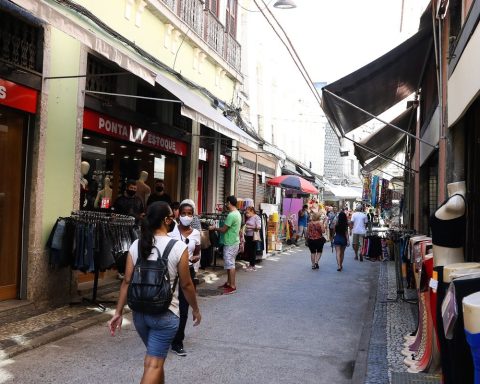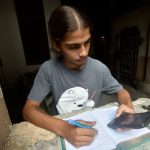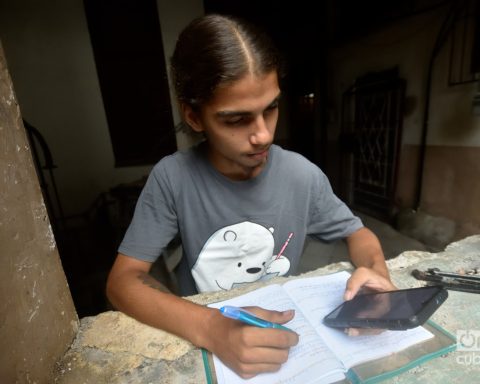The Ministry of Health defines Oropouche fever as a disease caused by an arbovirus of the Orthobunyavirus genus, first identified in Brazil in 1960, from a blood sample from a sloth captured during the construction of the Belém-Brasília highway.
Since then, isolated cases and outbreaks have been reported in the country, especially in the Amazon region, which is considered endemic. In 2024, however, the disease began to worry Brazilian health authorities. By the beginning of July, more than 7,000 cases had been confirmed in the country, with autochthonous transmission in at least 16 federative units. This week, São Paulo confirmed the first cases in the interior of the state.
Transmission occurs mainly through the vector Culicoides paraensispopularly known as maruim or sandfly. In the wild, sloths and non-human primates (and possibly wild birds and rodents) act as hosts. There are records of isolation of the virus in other insect species, such as Coquillettidia venezuelensis It is Aedes serratus.
In the urban cycle, humans are the main hosts. In this scenario, the mosquito Culex quinquefasciatuspopularly known as mosquito and commonly found in urban environments, can also transmit the virus.
Symptoms
The symptoms of Oropouche fever, according to the ministry, are similar to those of dengue fever and include severe headache, muscle pain, nausea and diarrhea. “In this sense, it is important that health surveillance professionals are able to differentiate these diseases through clinical, epidemiological and laboratory aspects and guide prevention and control actions,” warns the ministry.
The acute clinical picture, according to the folder, evolves with sudden onset of fever, headache, myalgia (muscle pain) and arthralgia (joint pain). Other symptoms such as dizziness, retro-ocular pain, chills, photophobia, nausea and vomiting are also reported. Cases with central nervous system involvement (such as aseptic meningitis and meningoencephalitis), especially in immunocompromised patients, and with hemorrhagic manifestations (petechiae, epistaxis, gingival bleeding) may occur.
According to the ministry, some patients (studies report up to 60%) may experience relapse, with the same symptoms or just fever, headache and myalgia after one or two weeks from the initial symptoms. “The symptoms last from two to seven days, with benign progression and no sequelae, even in the most severe cases.”
Unprecedented deaths
On the 25th, however, Bahia confirmed two deaths from Oropouche fever in the state. Until then, there had been no records of deaths associated with the infection anywhere in the world.
According to the Bahia State Health Department, the deaths were recorded in patients without comorbidities and who were not pregnant. The first death, a 24-year-old woman who lived in the municipality of Valença, occurred on March 27. The second death, a 21-year-old woman who lived in Camamu, was recorded on May 10.
Health surveillance technicians from Bahia reported that the patients presented with an abrupt onset of fever, headache, retro-orbital pain and myalgia, which quickly evolved into severe symptoms, including intense abdominal pain, bleeding and hypotension.
Diagnosis
The diagnosis of Oropouche fever is clinical, epidemiological and laboratory-based, and all positive cases must be reported. In addition to being subject to mandatory reporting, the disease is also classified by the ministry as requiring immediate reporting, “due to its epidemic potential and high mutation capacity, and it could become a threat to public health.”
Treatment
There is no specific treatment for Oropouche fever. Brazilian health authorities recommend that patients rest, receive symptomatic treatment and receive medical monitoring. In case of suspicious symptoms, the ministry asks that patients seek medical help immediately and report any potential exposure to the disease.
Prevention
Among the recommendations cited by the department to prevent Oropouche fever are:
– Avoid contact with areas where it occurs and/or minimize exposure to vector bites.
– Wear clothes that cover most of your body and apply repellent to exposed areas of your skin.
– Clear land and animal breeding sites.
– Collect leaves and fruits that fall to the ground.
– Use fine mesh screens on doors and windows.
Vertical transmission and microcephaly
In July alone, the ministry published two technical notes aimed at state and municipal managers regarding Oropouche fever. One of them recommends intensifying case surveillance and warns of the possibility of vertical transmission of the disease, which occurs when the virus is transmitted from mother to baby during pregnancy or childbirth.
In June, the Arbovirology and Hemorrhagic Fevers Section of the Evandro Chagas Institute analyzed serum and cerebrospinal fluid samples stored at the institution, collected for investigation of arboviruses and negative for dengue, chikungunya, zika and West Nile virus. In this study, the presence of antibodies against the Oropouche fever virus was detected in four newborns with microcephaly. “This is evidence that vertical transmission of the virus occurs, however, limitations of the study do not allow a causal relationship to be established between infection by the virus during uterine life and neurological malformations in babies,” the ministry highlighted in the document.
Last month, laboratory investigation into a case of fetal death at 30 weeks of gestation identified genetic material from the Oropouche fever virus in umbilical cord blood, placenta and several fetal organs, including brain tissue, liver, kidneys, lungs, heart and spleen. “This is evidence of vertical transmission of the virus. Laboratory analyses and epidemiological data are being carried out to conclude and final classify this case,” the ministry reported in the same document.
















